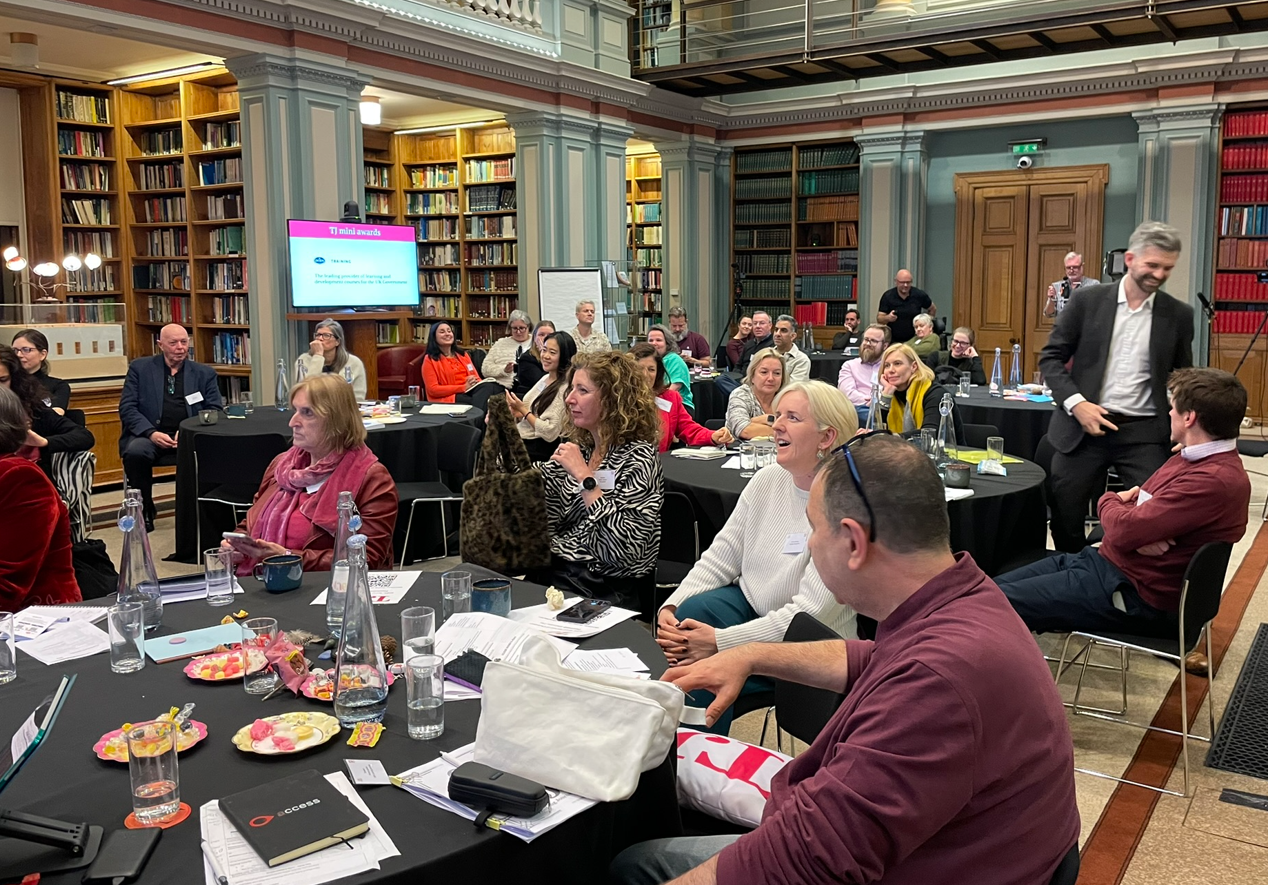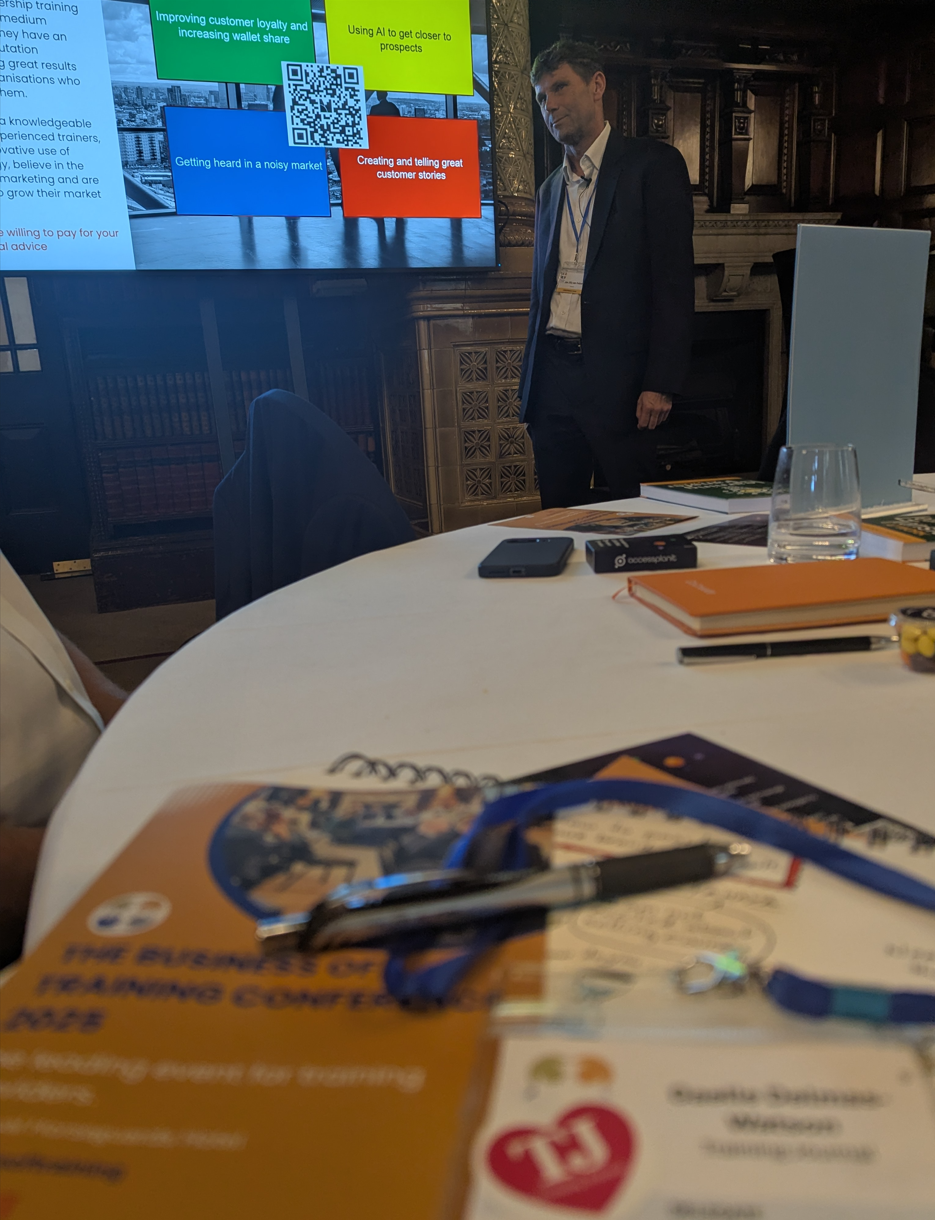Conor Gilligan interviews Clark Quinn about his recent book.
We follow your work in L&D and have found your blog, Learnlets, to be extremely informative. You’ve recently launched your new book, ‘Millennials, Goldfish and other Training Misconceptions’. What’s it about?
The subtitle, ‘debunking learning myths and superstitions’, is the answer. There are a large number of myths, beliefs proven wrong, that continue to be touted as viable in our industry. This is bad not only because we can waste time and money, but we might actually do things that lessen our impact!
Superstitions are similar, but there are also misconceptions that need clarification. In this book, I identify 16 myths, five superstitions, and address 16 misconceptions to help us make sense of what’s out there and try to help our industry hew to learning science-based practices.
The front page image really stands out – what was the inspiration for this drawing?
I wish I could take credit, but I had a totally different idea (that was wisely vetoed ;). What happened is that I detailed concepts for cartoons that highlighted the issue to accompany every entry. Then, ATD (the publisher) had a graphic designer who illustrated each of them.
We’re talking about a shift from the organisation providing all the learning to a continual learning perspective, and the associated technology infrastructure (and culture) to support this.
That designer, Fran Fernandez, also came up with the cover, based upon the title and topic. ATD really did a great job overall making the book have an appealing design to accompany the content.
We noticed the section in your book about Learning Management Systems. What’s your experience and advice to the L&D community?
“Here there be dragons!” Seriously, my advice is that LMS is a misnomer, you don’t ‘manage’ learning! They’re course management systems. And there’s still a role for them, but in the larger picture of a performance & development ecosystem (the topic of my previous book, ‘Revolutionize Learning & Development‘), there are many more functions that are also needed.
Collaboration and communication, resource portals, federated search, etc. We’re talking about a shift from the organisation providing all the learning to a continual learning perspective, and the associated technology infrastructure (and culture) to support this.
And I don’t think there can, nor should, be one all-singing, all-dancing solution; you want the best tool for the job. So while LMS vendors will tout how they now support resources, and portals, and social, I’d say create a unified environment from the best components, and integrate into a coherent user experience.
Your book talks about microlearning – do you think this is here to stay for the modern learner? Does this relate to the goldfish in some way?
Microlearning is one of the misconceptions I address, because there are many things that people refer to under the umbrella, and it’s not always clear which they mean. Do they mean performance support (just-in-time videos), or spaced learning (little learning bits delivered over time), and do they understand the nuances that go into doing those well?
And many times I hear arbitrary claims (e.g. ‘all our videos are one minute long) with no scientific backing. Arguably based upon the ‘attention span of a goldfish’, which is also bugwash. Attention is complex, but we watch movies and play computer games for hours! (There’s also a long story about how this bit of marketing hype became a ‘thing’ that’s emblematic of one of the ways myths get propagated.)
There are absolutely perfect reasons to do performance support, and spaced learning, but they’re not the same thing. I’m keen for both to happen (and another, contextualised learning, which is what I’d prefer we mean by microlearning), but I’ve heard consultants and vendors tout ‘microlearning’ as if it’s a panacea and it’s not.
I think (or hope), ultimately, we’ll get away from the undifferentiated term ‘microlearning’, and focus on distinctions that offer us real leverage in design of solutions.
Pages 142, 176 of your book talk about the experience API or Tin Can as it’s commonly known. How do you think this technology can use data to improve learner outcomes and reporting?
xAPI was a deliberate effort by the Advanced Distributed Learning initiative of the Department of Defense to supersede their own SCORM. SCORM was fine for tracking course completions and results, but what about other things?
What about accessing a job aid? Or talking to a coach? And what about finer granulation: what about going back to a course and looking at a particular page or diagram or video? What about not completing and still doing those things? That’s all valuable data that can help us understand what people need, are doing, and how they’re using our efforts.
More importantly, once those data are aggregated in a learning record store, they can be connected to business intelligence data for even greater insight. What if we detect that everyone who accesses this sales tool on a call has a X% higher closing rate? That’s pretty interesting.
And, to get somewhat geeky, we can run some machine learning to find unexpected relationships. Overall, the richer the data, the more we can improve outcomes. (“What’s measured improves” – Peter Drucker)
Finally, Gamification is mentioned in your book, what are the benefits of gamification and what should the instructional designer be aware of when using this in learning?
First, we have to be clear about what gamification is. There are two main meanings: one is adding on what’s often referred to as PBL (Points, Badges, & Leaderboards; there’s another PBL that is Problem-Based Learning I also address, and am a fan of). That’s all about taking game mechanics to tart up potentially dull content.
The other meaning is to tap into the intrinsic interest by setting the learning decisions in a context, making them meaningful and challenging, and bring the experience closer to a real game. There are arguments against the former, such as the motivation will dissipate, but I think it’s ok if you’ve already addressed the latter.
First, you want to try to find, and ‘bake in’ the intrinsic interest into the learning experience. Why should they care? Where’s the WIIFM (What’s In It For Them)? I maintained in my first book, Engaging Learning, that learning can and should be ‘hard fun’, and that’s what gamification should be about.
About the intervewer
Conor Gilligan is vice president of Webanywhere



